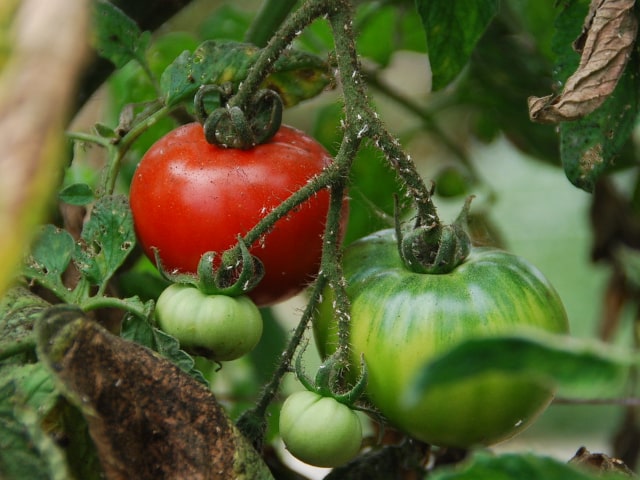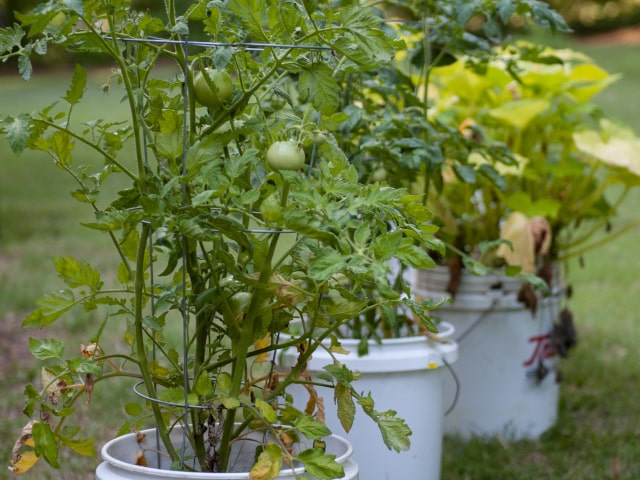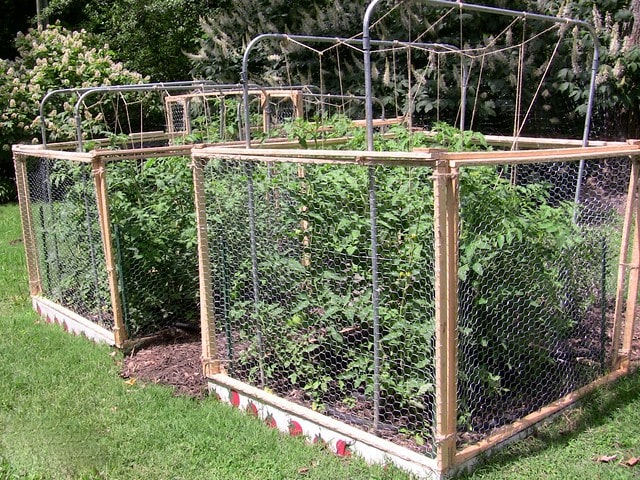
There are many different ways to plant tomatoes. One of the best ways is to provide tomatoes with many different elements you will place in the hole where you plant the seedlings.
It's easiest to plant seedlings about 12 to 16 inches in height. You may pot them inside a gallon container. After they are ready, you should replant them in the garden bed.
It's best to amend the beds by digging into them with a spade fork. It's important to prepare the bed properly, and what works the best is to add lots of organic matters, such as composted chicken manure, bat guano, kelp meal, Humic Acid, mycorrhizal fungi, etc. It's also important to add some fertilizer. Mix these ingredients thoroughly with the native soil. Dig as deep as you can into the soil using the spade fork until it's light and fluffy.
You should plant tomatoes about 3 feet apart. Spacing tomato seedlings closer will result in less fruit. Dig a deep hole to accommodate all the additions, and the exact depth will depend on the seedling. You want the plants to be submerged into the soil almost completely. Sometimes, the holes end up being almost two feet deep.
Adding Organic matters
Next, add more organic matters. Some of the best things to use are fish heads. You can get them from a restaurant or even for free from a butcher or fishmonger. You may also use fish tails, spines, and guts as well as shrimp shells. It may seem risky to use these materials because animals may wish to dig them up, but it generally doesn't happen. Place fish heads inside the deep hole.
If you can't get fish heads or tails, you may use a Fish Bone Meal as a substitute. Chuck a handful of it into the bottom of the hole. Fish Bone Meal may also be a good material if you want to grow your tomatoes in a container and can't dig a 2 feet deep hole. Don't use fish emulsion. It is not a good substitute because it tends to quickly dissipate and won't feed your tomato over a long time period.
The next thing you should put inside the hole are a couple of aspirin tablets and some crushed chicken egg shells. The aspiring is used to jump start the plant's immune system. The egg shells give your plants additional calcium, which will prevent blossom end rot (the brown patch on the bottom of tomatoes that lack calcium).
The next thing to put inside the hole is some Bone Meal. It's very important, particularly if you've used fish head and not Fish Bone Meal on the bottom. This will provide a nice organic source of phosphorus, needed for blossom production. More blossoms lead to more fruit. Bone Meal will also increase calcium for your tomatoes.
After this, add some organic fertilizer. Use any type of dry organic, all-purpose fertilizer that has all 3 macro nutrients. It's also recommended to put at least a large tablespoon of pure worm castings in the hole.
Planting Tomatoes
After the hole is ready and full of the organic stuff, place your tomatoes in the hole. Make sure to trim off the lower leaves and leave only the top-most leaves. Put about an inch or two of soil on top of the amendments in the hole.
When the tomato is in the hole, double check the depth by judging how far out of the ground the plant will be sticking. If it seems it's going to be too far down, add some more soil. If it seems like it'll be up above the soil more than you want, it's bad because it may not reach the fish heads and other organic stuff on the bottom. Therefore, it's best to gauge the depth of the hole according to the height of the individual plant.
After this, gently back fill with a push to settle the soil around the tomato. Don't push too hard by stomping on it. Don't press too hard. This is not necessary and it will expel all the air out of the soil. Remember, the roots need oxygen so this can be dangerous.
When you finish this, make a temporary well around the plant base for the first watering.
The First Watering
It is the most critical and needed for tomato growth. It's best to do it multiple times: water the tomatoes several times. Wait a few minutes between the takes to allow the water to drain through. If the hole is more than 12 inches deep it will take much water to wet the root ball located deep in the ground. So, don't be afraid to apply lots of water this first day. After this, back off the watering as your tomatoes start to grow.
Photo credit: Suzie's Farm




0 Comments